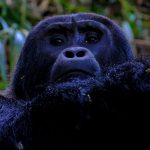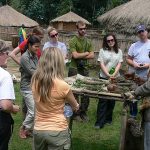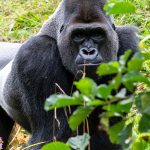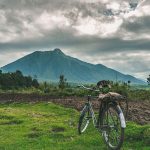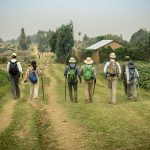How Gorilla habituation of a family is done in Volcanoes National Park; Gorilla habituation, a crucial aspect of conservation efforts, involves the process of familiarizing wild gorillas with the presence of humans, typically researchers and conservationists. In the context of Volcanoes National Park in Rwanda, a renowned habitat for mountain gorillas, habituation follows a meticulous and patient approach aimed at fostering coexistence between these majestic creatures and humans. The process is not only significant for research purposes but also for promoting ecotourism and ensuring the long-term survival of gorilla populations.
The journey of habituating a gorilla family in Volcanoes National Park begins with meticulous planning and the selection of a suitable group for habituation. This selection process takes into account various factors, including the size of the gorilla family, its behavior, and its accessibility within the park. Typically, families with relatively stable dynamics and a reasonable distance from human settlements are preferred for habituation efforts.
Once a suitable gorilla family is identified, the habituation process begins with initial observations from a safe distance. Researchers and trackers spend extensive time observing the gorillas’ behavior, movements, and interactions within their natural habitat. This preliminary phase allows them to understand the dynamics of the group and develop strategies for gradually introducing human presence without causing undue stress or disruption.
The next stage involves establishing gradual contact with the gorilla family. Trackers and researchers start by maintaining a respectful distance while slowly habituating the gorillas to their presence through non-intrusive methods such as vocalizations and mimicry of gorilla sounds. This phase requires immense patience and sensitivity to the gorillas’ responses, as any sign of distress or aggression necessitates a step back to allow the gorillas to acclimate at their own pace.
As trust between the gorillas and humans begins to develop, researchers gradually decrease the distance between themselves and the gorilla family. This phase involves maintaining a cautious yet non-threatening presence, allowing the gorillas to become accustomed to human proximity without feeling threatened or alarmed. Researchers meticulously observe the gorillas’ reactions and behavior, adjusting their approach accordingly to ensure minimal disruption to their natural routines.
Throughout the habituation process, researchers collect valuable data on the gorillas’ behavior, social structure, feeding patterns, and interactions with their environment. This observational data provides invaluable insights into gorilla ecology and facilitates conservation efforts aimed at protecting their natural habitats.
The duration of gorilla habituation can vary significantly depending on various factors, including the temperament of the gorilla family and their level of exposure to human presence. While some groups may acclimate relatively quickly, others may require months or even years of gradual habituation efforts before they fully tolerate human proximity.
Once the gorilla family has been successfully habituated, researchers continue to monitor their behavior and interactions to ensure ongoing conservation efforts and minimize human impact on their natural habitat. The habituation process not only benefits scientific research but also plays a crucial role in promoting ecotourism by providing visitors with the opportunity to observe gorillas in their natural environment while fostering a greater appreciation for wildlife conservation.
In conclusion, gorilla habituation in Volcanoes National Park represents a collaborative effort between researchers, conservationists, and local communities to protect and preserve one of the world’s most iconic and endangered species. Through patience, dedication, and careful observation, habituation efforts contribute to our understanding of gorilla behavior while promoting sustainable tourism and safeguarding their natural habitats for generations to come.
